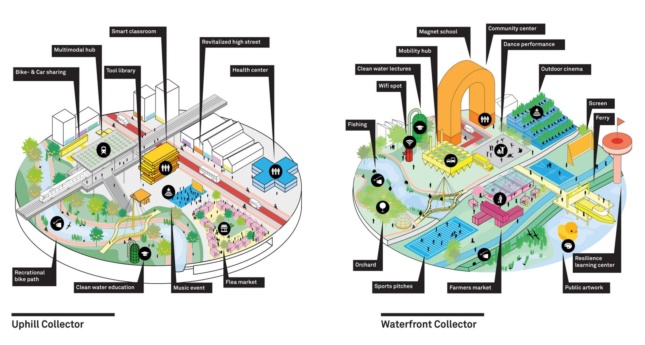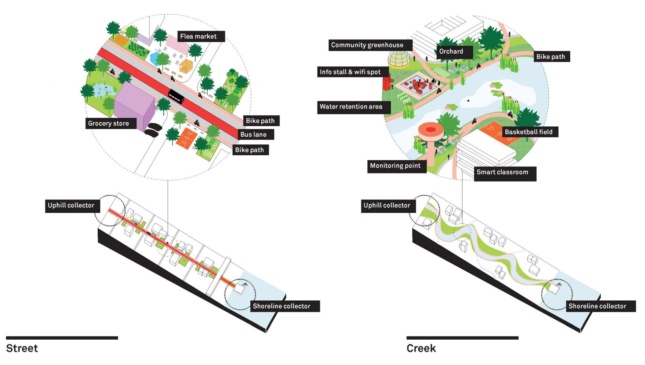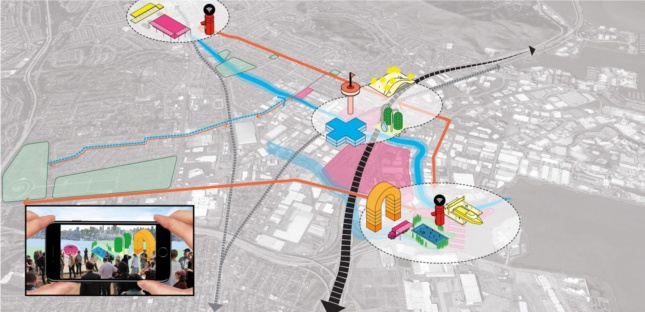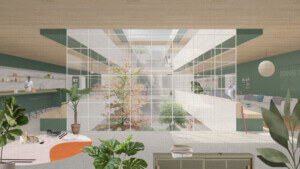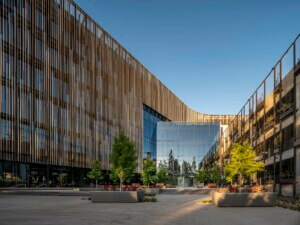Dutch architects MVRDV have teamed up with Australian architecture firm Hassell to craft a scheme for Resilient by Design’s Bay Area Challenge competition that focuses on a taking a kit-of-parts approach to create an interconnected network of urban zones and landscapes that can potentially mitigate some of the effects of climate change for the city of South San Francisco.
The proposal—dubbed “Connect and Collect”—envisions deploying a taxonomic set of structures developed by the firms in order to create a type of “do-it-yourself urbanism” that would supercede existing development, according to a promotional video issued with the design proposal. Taken together, the structures fulfill the basic functions of urban life at various scales, creating places to gather, receive services, live, and work, while also offering the flexibility to change in use after natural disasters.
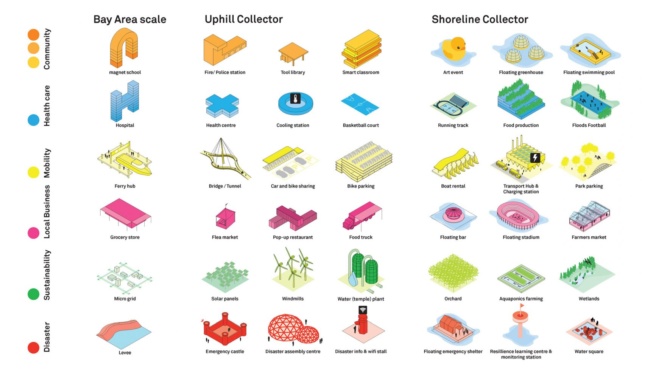
The proposal divides inhabited areas into two distinct but interwoven zones that are then populated with “collector” sites residents can make use of. So-called “shoreline collectors”—art venues, floating farms, emergency shelters, ferry terminals, and other objects—will dot the water’s edge and its surrounding tidal zones, according to the scheme. These areas are meant to connect with so-called “uphill collectors”—grocery stores, hospitals, emergency castles, car and bike-sharing facilities and the like—further inland via a set of urban-focused streets and nature-focused creeks that change as they drop to meet the water’s edge. The collectors are to be organized in grouped configurations, adjacent to regionally-scaled infrastructural elements like schools and transit. These nodes will then aggregate with one another via multi-modal connections to create a distributed network of soft-edge urban areas that not only function on a day-to-day level, but also adapt to natural disasters and periodic flooding with greater ease than existing development models.
Renderings and diagrams for the proposal depict colorful groupings of the collector structures organized in porous, quasi-urban configurations with the spaces in between the collector sites populated by nature trails, bicycle paths, and transit lines. The plan proposes a slew of new public recreational areas to help create these hydrophilic zones, including a new shoreline park at Colma Creek.
In a statement announcing the proposal, Nathalie de Vries, MVRDV’s co-founder, said, “Climate change is real; by the end of the century there will be a sea level rise of two meters,” adding, “Bay Area communities [must] respond to this challenge in a multi-disciplinary approach to upgrade their general resilience.”

The so-called HASSELL+ team’s proposal is among ten visions articulated for Bay Area communities being developed as part of Resilient by Design’s Bay Area Challenge. Competing groups include teams helmed by BIG, James Corner Field Operations, and Scape, among others.
A recently-revealed proposal by BIG and One Architecture+Urbanism proposes a series of floating islands for the south San Francisco Bay.
Other members of the HASSELL+ design team include: Deltares, Lotus Water, frog design, Originate, Civic Edge Consulting, Goudappel, and Page & Turnbull architects. The designers will continue to work through this spring and will present their final proposals in May 2018 at the Global Climate Action Summit in San Francisco.







